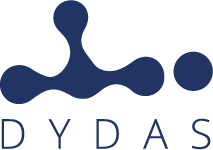Deep Learning models require large amount of data to be trained. Any use case requiring the processing of data like: images, videos, full names, addresses, sensitive information and so on. This represents a potential risk for privacy breaches.
For this reason, there are different methods for protecting data during training and others during the inference time.
SECURE TRAINING
- Homomorphic encryption: ML models can be run on encrypted data by using a cryptographic method that allows mathematical operations to be carried out on ciphertext instead of plain data itself.
- Secure Enclaves: it is important to protect data that is currently “in use”. Enclaves are used to execute ML workloads in a memory region that is protected from unauthorized access.
- Federated Learning: originally proposed by Google, the main idea is to build ML models based on datasets that are distributed across multiple devices. This solution makes possible to train a model collectively without sharing private data between devices.
SECURE INFERENCE
- Edge Computing: AI models are deployed on edge devices, enabling real-time and on-device image processing, without sending and storing sensitive visual data.
- Image Obfuscation: traditionally private sensitive visual data are anonymized by applying techniques such as pixelation, blacking and blurring. However, the traditional obfuscation is an approach that can be defeated by sophisticated neural networks that can successfully reconstruct up to the 70% of original data.
- Removal of Moving Objects: an alternative to blurring is represented by the automatically removal and inpainting of sensitive regions like faces and licence plates that are typically moving objects.
Tutela della privacy
I modelli di Deep Learning richiedono una grande quantità di dati per essere addestrati. Qualsiasi caso d’uso che richieda il trattamento di dati come: immagini, video, nomi completi, indirizzi, informazioni sensibili e così via. Ciò rappresenta un potenziale rischio di violazione della privacy.
For this reason, there are different methods for protecting data during training and others during the inference time.
SECURE TRAINING
- Crittografia omomorfica: i modelli ML possono essere eseguiti su dati crittografati utilizzando un metodo crittografico che consente di eseguire operazioni matematiche su testo cifrato anziché sui dati semplici stessi.
- Secure Enclaves: è un sottoinsieme di sicurezza importante per proteggere i dati “in uso”. Gli enclave vengono utilizzati per eseguire carichi di lavoro ML (Machine Learning) in un’area di memoria protetta da accessi non autorizzati.
- Apprendimento federato: originariamente proposto da Google, l’idea principale è costruire modelli ML basati su set di dati distribuiti su più dispositivi. Questa soluzione rende possibile addestrare un modello collettivamente senza condividere dati privati tra dispositivi.
SECURE INFERENCE
- Edge Computing: i modelli AI vengono implementati sui dispositivi edge, consentendo l’elaborazione delle immagini in tempo reale e sul dispositivo, senza inviare e archiviare dati visivi sensibili.
- Offuscamento dell’immagine: i dati visivi sensibili tradizionalmente privati vengono resi anonimi applicando tecniche come pixelizzazione, oscuramento e sfocatura. Tuttavia, l’offuscamento tradizionale è un approccio che può essere sconfitto da sofisticate reti neurali in grado di ricostruire con successo fino al 70% dei dati originali.
- Rimozione di oggetti in movimento: un’alternativa alla sfocatura è rappresentata dalla rimozione automatica e dal repainting di aree sensibili come volti e targhe che sono tipicamente oggetti in movimento.


